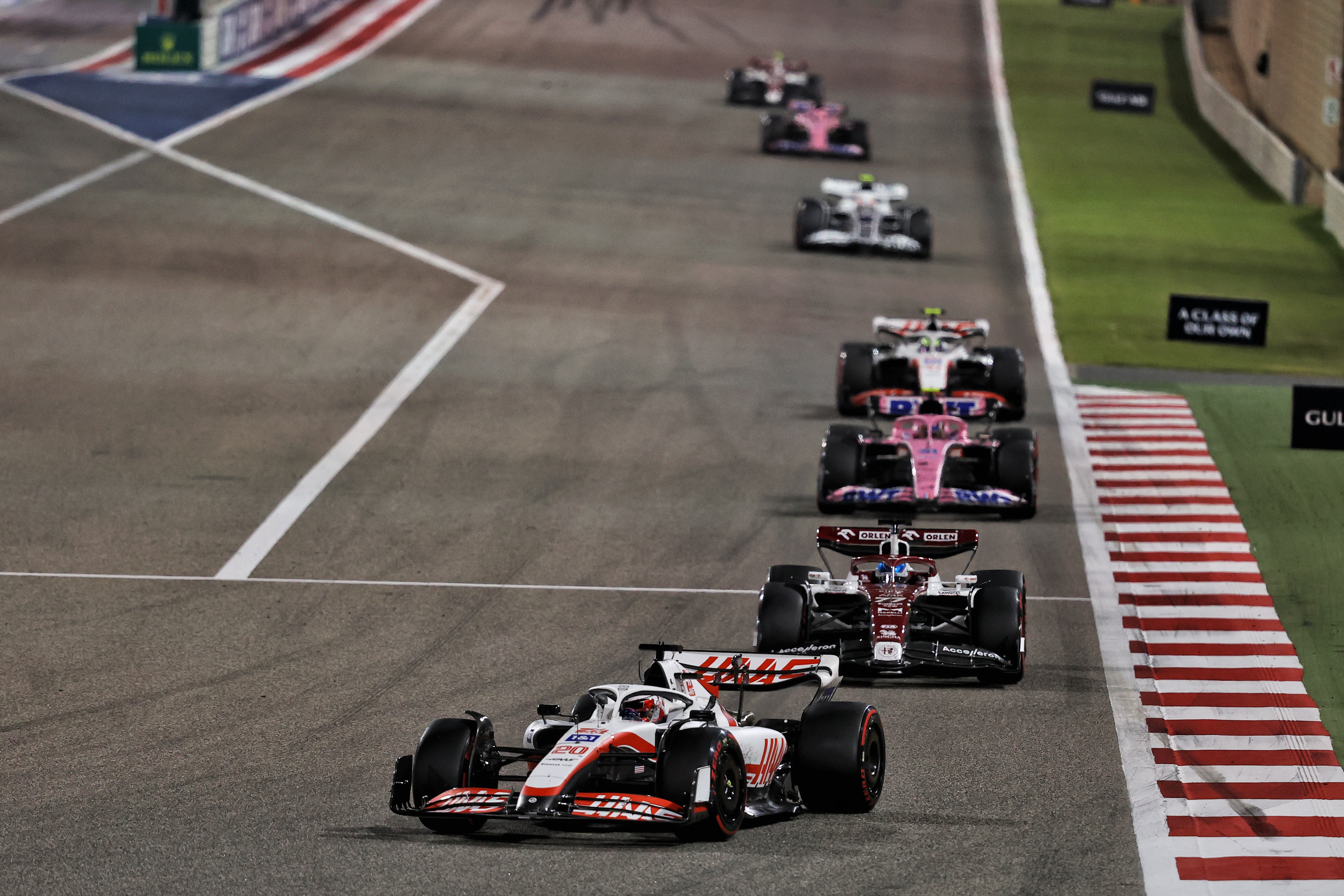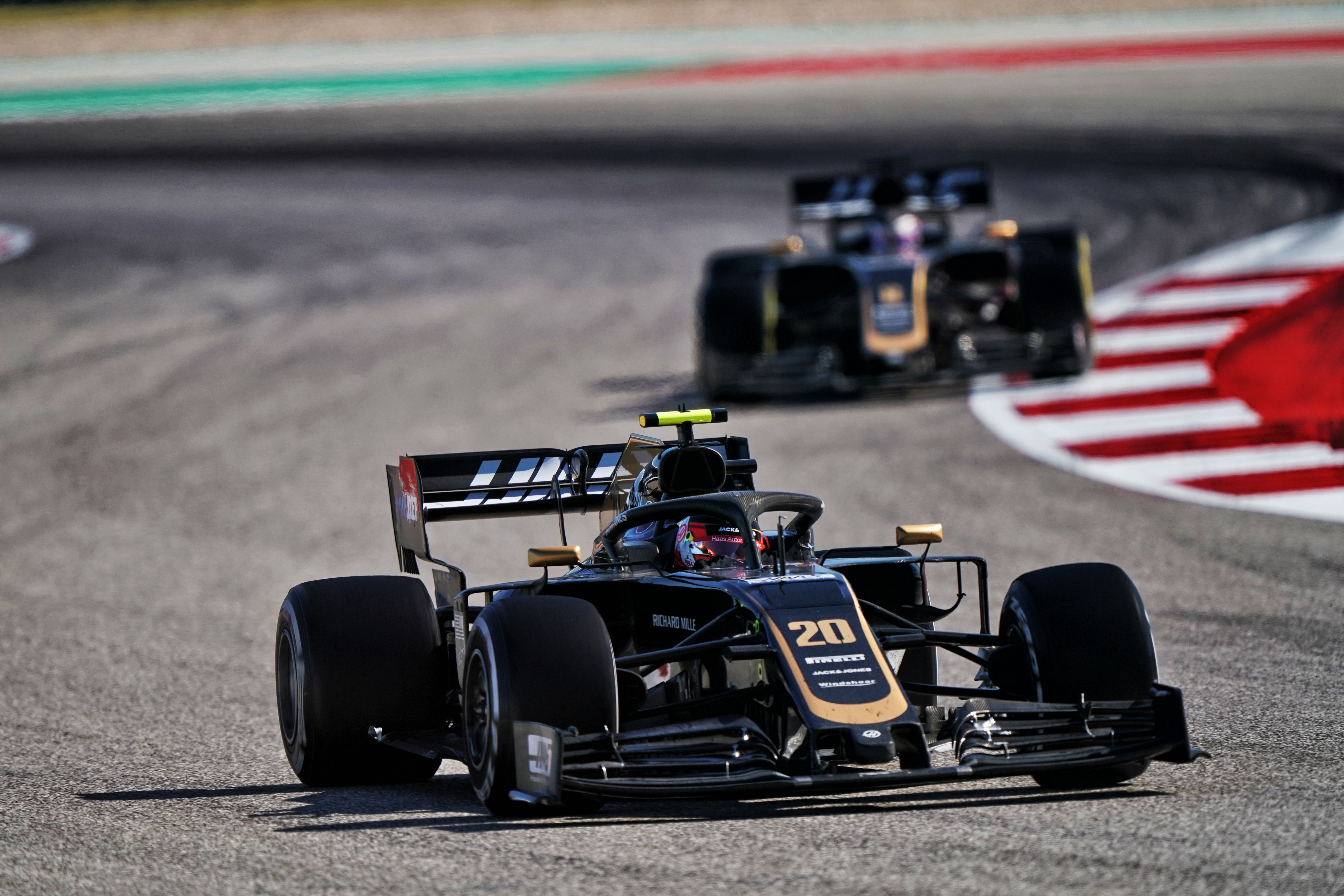Up Next

“We were the strongest car in the midfield” was Kevin Magnussen’s summary after finishing fifth in the Formula 1 season-opening Bahrain Grand Prix, which proved something the Haas team thought could be the case, but didn’t dare dream could really be true heading into the weekend.
After an unconvincing first test in Barcelona, during which a series of problems restricted it to 160 laps over three days – the least of any team – Haas showed genuine promise during the Bahrain test. That wasn’t just with its headline lap times, set when it had the track to itself during its extra running to compensate for a freight delay, but also on its long-run pace.
There was no luck involved in Magnussen’s midfield-leading run, save for the fact that the retirement of the Red Bulls bumped him up two places and his very presence in the car given he was a late replacement for Nikita Mazepin.
The Haas led the midfield group, running as best of the rest behind the cars behind the top three teams – Ferrari, Red Bull and the chasing Mercedes.
“It was a lot of fun, I enjoyed it a lot,” said Magnussen after his first F1 race since the end of 2020. “It’s so good to be back in this position.
“I’ve just got to say a massive well done to the team, getting this car into this position – we were the strongest car in the midfield. I could actually see the Mercedes almost the whole race.
“I know we got a safety car at the end, so that helped a little on that, but it was a different story to in the past and I’m so thankful. I’ve been saying this all weekend that I just can’t believe this opportunity that I’ve got here. P5 today. Crazy!”
ALL the hugs and ALL the smiles 🤗😁#HaasF1 #BahrainGP pic.twitter.com/oG1bLNKQ3R
— Haas F1 Team (@HaasF1Team) March 21, 2022
Magnussen qualified seventh, 1.250s off pole position and almost four-tenths clear of Alpine driver Fernando Alonso. That was despite a hydraulic leak that restricted him to one run in each of Q2 and Q3, which led to him grinding to a halt at Turn 1 after setting his seventh-place qualifying lap.
The one asterisk against this has to be the pace of Valtteri Bottas in the Alfa Romeo C42, which was a quarter of a second faster in qualifying.
Much of that was gained through the Turn 10 hairpin, although that arguably didn’t reflect the relative performance accurately given Magnussen was over three-tenths faster in Q2 than Q3.
In the race, Bottas’s poor first lap, dropping eight places to 14th, meant that we didn’t get the chance to see him race Magnussen – although the pace of the Alfa Romeo was impressive.
Magnussen briefly ran fifth before slipping back behind the quicker cars of Sergio Perez and George Russell. And he stayed there, save for briefly losing position to a Pierre Gasly undercut, which Magnussen quickly rectified on track after his stop.

By the time the safety car was deployed on lap 46, Magnussen had dropped away from the Mercedes driver but was clear of the rest of the midfield, by now headed by Bottas. At the restart, he held position and was rewarded with Haas’s best result since Romain Grosjean and Magnussen finished fourth and fifth in Austria 2018.
It’s clear the car is quick – based on the fastest individual laps set by each team over the weekend it was just 0.997% off the outright pace. But the real story is how a team that scored a grand total of three points over the previous two seasons staged this recovery.
“I don’t want to understand it – I want to live the dream,” joked team principal Guenther Steiner a few hours after this amazing result.
“We knew that we have a good car, we saw that yesterday, but you still need to deliver it and. The longest stint we did up until now was 18 laps in a row, so now to do 57 was quite an achievement.
“The team didn’t do anything wrong, everything was well prepared. Yesterday, the qualifying, we were fighting in a difficult position but everyone did his job and the right decisions at the right time. So it was a very good weekend.”
For Steiner, and everyone in the team, this ‘dream’ followed the nightmare of two difficult years. You can even trace the malaise back to 2019 [pictured below] when an aerodynamic problem it took too long to detect meant that a car that could be quick struggled over a race distance thanks to its tyre rules.

That was fixed for 2020, but the onset of the COVID-19 pandemic meant the team effectively switched to the leanest possible financial running. Development ceased and upgrades that had been designed, researched and proved to be an improvement were never made.
The new Concorde Agreement with its more equitable division of the slice of F1’s revenue shared by the teams and implementation of the cost cap, which kicked in for 2021, meant that owner Gene Haas was willing to up the investment again – but with carryover cars, last year was effectively a write off. The car was modified to meet the legality demands of the tweaked aero rules and that was it.
This condemned everyone at Haas to a 2021 season that was an exercise in futility in terms of results. To their eternal credit, the team trackside battled on and somehow retained relative race sharpness in the most difficult of circumstances – not made easier by the presence of the difficult Mazepin.
Both the team leadership and the dedication of the rank and file in the team meant that it came into this year capable of making the most of a vastly improved car.
That the car would be vastly improved was not a certainty. Yes, Haas focused entirely on 2022 to the exclusion of last season’s car and it also benefitted from having, along with Williams, the most windtunnel time and CFD items thanks to F1’s sliding-scale aerodynamic testing rules, but that had to be used properly.
Charged with delivering on that was Simone Resta, effectively on loan from Ferrari who not only had to oversee the car, but also make a whole new aero design office work as Haas decreased its reliance on Dallara. This is based in a new building at Ferrari’s Maranello base, but it was very much the team’s own work. Even with a supply of transferrable parts from Haas, the things that really make the car fast – the aerodynamics – were down to Resta and his team.
“It’s more than half of a team,” said Steiner when The Race suggested that this technical change meant that it was the product of a team that was partially new.
“There are over 100 people and you don’t see them. Last year, can you imagine when they watched TV and how we performed how depressed they got? But they carried on digging and they dug us out of the hole.”

Ferrari’s impressive power unit performance also played its part and doubtless, there will be renewed complaints from rivals about its reliance on its technical partner, but this result was fundamentally the story of a team that has been through tough times over the past two years.
It’s one thing to be at the back, but there’s always hope of improvement. What makes the situation Haas was in different is that for so long there was nothing more than the distant and faint glimmer of light at the end of the tunnel.
But as the Bahrain Grand Prix showed, the strategy – unseen and only testable in simulation before the car hit the track – was working. It wasn’t until Magnussen crossed the line to take a fifth place that will have felt like a victory to everyone at Haas that there was conclusive proof that Haas really had pulled it off.








